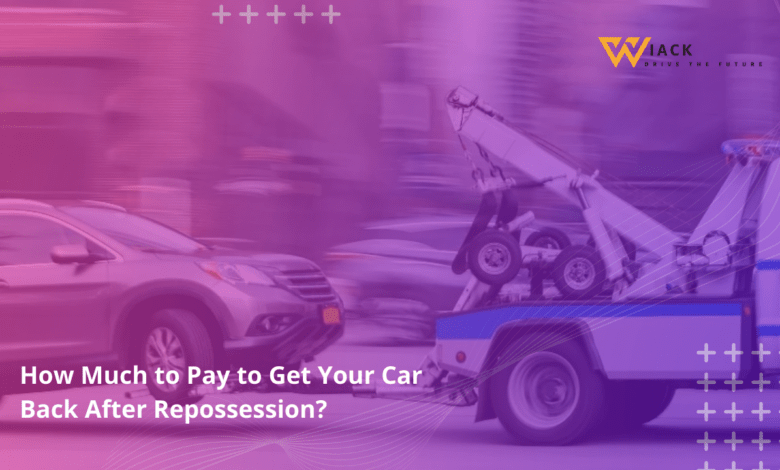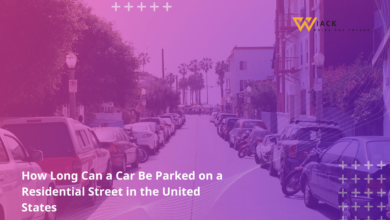How Much to Pay to Get Your Car Back After Repossession?

Car repossession can be a stressful and confusing experience for many people. If you’ve fallen behind on your car payments and your vehicle has been repossessed, you may be wondering how much it will cost to get your car back. The amount you’ll need to pay depends on several factors, including the specifics of your loan agreement, state laws, and how long it’s been since the repossession occurred. This comprehensive guide will walk you through the repossession process, your options for getting your car back, and the various costs involved.
Understanding the Repossession Process
Before diving into the costs associated with getting your car back after repossession, it’s important to understand how the repossession process works and why it happens in the first place.
What Happens When Your Car is Repossessed?
When a lender repossesses your car, they take physical possession of the vehicle without your permission. This typically occurs when you’ve defaulted on your auto loan by missing one or more payments. The repossession process usually follows these steps:
- The lender determines you’re in default on your loan.
- A repossession agent is hired to locate and seize your vehicle.
- The agent takes possession of your car, often without prior notice.
- Your car is towed to a storage facility.
- The lender notifies you of the repossession and your rights.
- If you don’t take action to reclaim the vehicle, it may be sold at auction.
It’s important to note that in most states, lenders can repossess your car without going to court or even warning you in advance. This can make the experience particularly jarring for many borrowers.
Why Was Your Car Repossessed?
The most common reason for car repossession is falling behind on loan payments. However, there are other situations that can lead to repossession:
- Defaulting on payments: Missing one or more payments on your auto loan is the primary cause of repossession.
- Lack of insurance: Many loan agreements require you to maintain adequate insurance on the vehicle. Failing to do so can be grounds for repossession.
- Breaching other terms of the loan agreement: This could include using the car for illegal activities or failing to pay property taxes on the vehicle.
Understanding why your car was repossessed is crucial in determining your options for getting it back and avoiding similar situations in the future.
Who Can Repossess Your Car?
Typically, the following parties have the legal right to repossess your vehicle:
- The lender: This is usually a bank, credit union, or finance company that provided your auto loan.
- Repossession agents: These are third-party companies hired by lenders to physically repossess vehicles.
- Law enforcement: In some cases, police may impound your car for unpaid tickets or if it’s involved in criminal activity.
It’s important to know that while these parties have the right to repossess your car, they must do so without “breaching the peace.” This means they can’t use physical force, threaten violence, or break into a locked garage to take your car.
Your Options to Get Your Car Back
If your car has been repossessed, you generally have three main options for getting it back: reinstating the loan, redeeming the loan, or buying the car back at auction. Each option has its own set of requirements and costs.
Reinstate the Loan
Loan reinstatement is often the most affordable option for getting your car back after repossession. This involves bringing your loan current by paying all past-due amounts, including:
- Missed payments
- Late fees
- Repossession fees
Once you’ve paid these amounts, your loan is reinstated, and you can resume making regular payments. Here’s what you need to know about loan reinstatement:
- Availability: Not all lenders offer reinstatement, and some states don’t require lenders to allow it. Check your loan agreement and state laws to see if this option is available to you.
- Time frame: There’s usually a limited window for reinstatement, often 15-30 days after repossession.
- Costs: While generally less expensive than other options, reinstatement can still be costly, especially if you’ve missed several payments or if significant fees have accrued.
To reinstate your loan, contact your lender as soon as possible after repossession and request a reinstatement quote. This quote will outline exactly how much you need to pay to get your car back and resume your loan.
Redeem the Loan
Loan redemption involves paying off the entire remaining balance of your loan, plus any repossession fees and related costs. This option is typically more expensive than reinstatement but may be necessary if reinstatement isn’t available or if you want to own the car outright. Here’s what redemption entails:
- Full payoff: You’ll need to pay the entire remaining balance on your loan, not just the past-due amounts.
- Additional costs: Redemption also includes paying all repossession fees, storage fees, and other related expenses.
- Time frame: Like reinstatement, there’s usually a limited window for redemption before the car is sold at auction.
To redeem your loan, request a payoff quote from your lender. This quote will detail the total amount you need to pay to fully satisfy the loan and reclaim your vehicle.
Buy Your Car Back at Auction
If you can’t reinstate or redeem your loan, your final option may be to buy your car back at auction. After repossession, if you don’t take action to reclaim your vehicle, the lender will typically sell it at a public auction. Here’s what you should know about this option:
- Auction details: Your lender is required to inform you of the date, time, and location of the auction.
- Bidding process: You’ll need to attend the auction and bid on your car like any other buyer.
- Potential savings: In some cases, you may be able to buy your car back for less than what you owed on the loan.
- Remaining balance: If the car sells for less than what you owed (including repossession fees), you may still be responsible for paying the difference, known as a deficiency balance.
While buying your car back at auction can sometimes save you money, it’s generally riskier and less predictable than reinstatement or redemption.
Costs Associated with Repossession
Understanding the various costs associated with car repossession is crucial in determining how much you’ll need to pay to get your vehicle back. These costs can add up quickly and may include:
Repossession Fees
Repossession fees are charges imposed by the lender to cover the cost of hiring a repossession agent and physically taking possession of your car. These fees can vary widely depending on your location and the specific circumstances of the repossession, but typically range from $200 to $400. Some common repossession fees include:
- Towing fees: The cost of towing your car to a storage facility.
- Locksmith fees: If the repossession agent needs to make new keys for your car.
- Administrative fees: Charges for processing the repossession paperwork.
It’s important to note that some states limit the amount lenders can charge for repossession fees, so be sure to check your local laws.
Storage Fees
Once your car is repossessed, it’s typically held in a storage facility until you reclaim it or it’s sold at auction. Storage fees accrue daily and can add up quickly. These fees generally range from $25 to $75 per day, depending on your location and the size of your vehicle.
To minimize storage fees, it’s crucial to act quickly if you plan to reinstate your loan or redeem your vehicle. The longer your car remains in storage, the more you’ll owe.
Deficiency Balance
If your car is sold at auction for less than what you owed on the loan (including all repossession and storage fees), you may be responsible for paying the difference, known as a deficiency balance. For example:
- You owed $10,000 on your loan at the time of repossession
- Repossession and storage fees totaled $1,000
- Your car sold at auction for $8,000
- Your deficiency balance would be $3,000 ($10,000 + $1,000 – $8,000)
Lenders can pursue legal action to collect deficiency balances, which can result in wage garnishment or liens on your other assets. In some cases, you may be able to negotiate with your lender to reduce or forgive the deficiency balance.
Factors Affecting the Cost
Several factors can influence how much you’ll need to pay to get your car back after repossession. Understanding these factors can help you better estimate your costs and negotiate with your lender.
The Amount You Owe
The outstanding balance on your loan is a primary factor in determining how much you’ll need to pay. This includes:
- The principal balance remaining on the loan
- Any unpaid interest that has accrued
- Late fees from missed payments
If you’re reinstating your loan, you’ll typically need to pay all past-due amounts plus repossession fees. If you’re redeeming the loan, you’ll need to pay the entire outstanding balance plus fees.
The Value of Your Car
Your car’s current market value can affect your options and costs in several ways:
- If your car is worth more than you owe, you may have more leverage in negotiating with your lender.
- If your car is worth less than you owe, you may face a larger deficiency balance if the car is sold at auction.
- The car’s value may influence how much your lender is willing to work with you on reinstatement or redemption options.
Research your car’s value using resources like Kelley Blue Book or NADA Guides to better understand your position.
The State You Live In
State laws can significantly impact your rights and the costs associated with repossession. Some states:
- Require lenders to offer reinstatement options
- Limit the fees that lenders can charge for repossession
- Mandate specific notice requirements before and after repossession
- Provide additional consumer protections in the repossession process
Research your state’s repossession laws or consult with a local consumer protection attorney to understand your rights and potential costs.
Your Lender’s Policies
Different lenders have varying policies when it comes to repossession and loan reinstatement. Some factors that can affect your costs include:
- Whether the lender offers reinstatement options
- The lender’s willingness to negotiate on fees or payment plans
- The speed at which the lender moves to auction repossessed vehicles
Building a good relationship with your lender and communicating openly about your financial situation can sometimes lead to more favorable terms or options.
How to Determine the Cost
To get an accurate picture of how much you’ll need to pay to get your car back, follow these steps:
Contact Your Lender
As soon as you realize your car has been repossessed, reach out to your lender. Ask for detailed information about:
- The reason for the repossession
- Your options for getting the car back
- Any deadlines you need to meet
Be prepared to take notes and ask for written confirmation of any information provided.
Obtain a Reinstatement Quote
If reinstatement is an option, request a detailed reinstatement quote from your lender. This quote should include:
- The total amount needed to bring your loan current
- A breakdown of past-due payments, late fees, and repossession costs
- The deadline for making the reinstatement payment
Review this quote carefully and ask for clarification on any charges you don’t understand.
Get a Payoff Amount
If you’re considering redeeming your loan, request a payoff quote from your lender. This should include:
- The total amount needed to pay off the loan in full
- All associated repossession and storage fees
- The deadline for making the payoff payment
Compare this amount to your car’s current market value to determine if redemption makes financial sense.
Research Auction Information
If you’re unable to reinstate or redeem your loan, ask your lender for information about the upcoming auction. Find out:
- The date, time, and location of the auction
- Any requirements for participating in the auction (e.g., bringing cash or a cashier’s check)
- The minimum bid amount, if any
Research similar vehicles sold at auction to get an idea of what your car might sell for.
Tips for Getting Your Car Back
If you’re determined to get your car back after repossession, consider these tips to improve your chances of success:
Act Quickly
Time is of the essence when dealing with repossession. The longer you wait, the more fees will accrue, and the closer your car gets to being sold at auction. Take action as soon as you learn of the repossession by:
- Contacting your lender immediately
- Gathering all necessary financial information
- Exploring your options for reinstatement or redemption
Remember, many states have laws that limit how long you have to reclaim your vehicle, often around 15-30 days.
Negotiate with Your Lender
Don’t be afraid to negotiate with your lender. They may be willing to work with you, especially if you’ve been a good customer in the past. Consider asking for:
- A reduction in repossession fees
- A more affordable repayment plan
- An extension on the deadline for reinstatement or redemption
Be honest about your financial situation and demonstrate your commitment to resolving the issue.
Prepare to Pay in Full
If you’re able to reinstate or redeem your loan, be prepared to pay the full amount required. This may mean:
- Borrowing money from family or friends
- Taking out a personal loan
- Selling other assets
Remember that partial payments are usually not accepted for reinstatement or redemption.
Consider Your Financial Situation
Before committing to getting your car back, carefully evaluate your financial situation. Ask yourself:
- Can you afford the ongoing loan payments?
- Is the car worth the cost of getting it back?
- Would it be more financially prudent to let the car go and explore other transportation options?
Sometimes, letting go of the repossessed car and focusing on rebuilding your finances may be the best long-term decision.
Legal Considerations
Understanding your legal rights and responsibilities is crucial when dealing with car repossession. Here are some key legal considerations to keep in mind:
Your Rights as a Borrower
As a borrower, you have certain rights during the repossession process, including:
- The right to proper notice: In most states, lenders must provide written notice before and after repossession, including information about your right to reinstate or redeem the loan.
- Protection against “breach of peace”: Repossession agents cannot use physical force, threats, or break into your property to take your car.
- The right to personal property: Any personal items left in your car at the time of repossession must be returned to you.
- The right to a commercially reasonable sale: If your car is sold at auction, the sale must be conducted in a commercially reasonable manner.
Familiarize yourself with your state’s specific laws regarding repossession to ensure your rights are protected.
Potential Legal Disputes
Several legal issues can arise during the repossession process, including:
- Wrongful repossession: If your car was repossessed when you weren’t actually in default, or if the repossession was conducted illegally.
- Failure to provide proper notice: If the lender didn’t follow state-mandated notification procedures.
- Unreasonable fees: If the lender charged excessive or unauthorized fees during the repossession process.
- Improper sale: If the lender didn’t conduct the sale of your car in a commercially reasonable manner.
If you believe your rights have been violated during the repossession process, you may have grounds for legal action against the lender.
Seeking Legal Advice
Given the complexity of repossession laws and the potential for legal disputes, it may be wise to consult with an attorney, especially if:
- You believe the repossession was wrongful or conducted illegally
- You’re facing a large deficiency balance after the sale of your car
- You’re unable to reach an agreement with your lender
Many consumer protection attorneys offer free initial consultations and may be able to help you understand your rights and options.
Protecting Your Personal Property
When your car is repossessed, it often contains personal belongings. Understanding how to retrieve these items and protect your property is important.
Retrieving Your Belongings
After repossession, you have the right to retrieve any personal property left in your vehicle. Here’s what you need to know:
- Contact the lender: As soon as you learn of the repossession, contact your lender to ask about retrieving your personal items.
- Act quickly: Some states limit the time you have to claim your belongings, so don’t delay.
- Schedule a pickup: Arrange a time with the lender or storage facility to collect your items.
- Bring identification: You may need to show ID to prove ownership of the items.
Remember, the lender is required to return your personal property, even if you don’t plan to reinstate or redeem the loan.
Inventorying Your Items
Before retrieving your belongings, it’s wise to create an inventory of items that were in your car. This can help you ensure you receive everything back and provide evidence if any items are missing. Here’s how to create an effective inventory:
- Make a list: Write down all items you remember being in the car, including:
- Electronics (phones, GPS devices, dashcams)
- Personal documents (registration, insurance cards)
- Clothing and accessories
- Tools or equipment
- Any valuable items
- Estimate values: If possible, note the approximate value of each item.
- Document with photos: If you have photos of your car’s interior before repossession, these can be helpful in proving what items were present.
- Check thoroughly: When retrieving your items, check all compartments, including the glove box, center console, trunk, and under seats.
- Sign off: Ask for a written record of the items you’ve retrieved and have a representative from the lender or storage facility sign it.
Addressing Damage to Property
If any of your personal property is damaged during the repossession process, you may be entitled to compensation. Here’s what to do:
- Document the damage: Take photos and detailed notes of any damaged items.
- Notify the lender: Inform your lender in writing about the damaged property.
- File a claim: Submit a formal claim to the lender for the value of the damaged items.
- Consider legal action: If the lender refuses to compensate you for damaged property, you may need to consider small claims court or other legal options.
Remember, while the lender has the right to repossess your car, they do not have the right to damage or keep your personal property.
Rebuilding Your Credit
A car repossession can have a significant negative impact on your credit score. Understanding this impact and taking steps to rebuild your credit is crucial for your financial future.
Impact of Repossession on Your Credit
A repossession can severely damage your credit in several ways:
- Negative mark: The repossession itself will be reported to credit bureaus and remain on your credit report for up to 7 years.
- Late payments: Any missed payments leading up to the repossession will also negatively affect your credit score.
- Collections: If you have a deficiency balance that goes to collections, this will further damage your credit.
- Lower credit score: As a result of these factors, your credit score could drop by 100 points or more.
Understanding the extent of the damage can help motivate you to take action to rebuild your credit.
Steps to Improve Your Credit
While the impact of a repossession is significant, there are steps you can take to start rebuilding your credit:
- Pay off the deficiency balance: If you owe money after the repossession, try to pay it off as quickly as possible to prevent further damage to your credit.
- Make all other payments on time: Ensure you’re making timely payments on all other debts and bills to demonstrate responsible credit use.
- Reduce your credit utilization: Pay down credit card balances to lower your credit utilization ratio, which can positively impact your score.
- Consider a secured credit card: If you’re having trouble qualifying for traditional credit, a secured credit card can help you rebuild your credit history.
- Become an authorized user: Ask a family member with good credit to add you as an authorized user on their credit card to benefit from their positive payment history.
- Check your credit reports: Regularly review your credit reports for errors and dispute any inaccuracies you find.
- Avoid applying for new credit: Too many hard inquiries can further lower your score, so limit new credit applications while rebuilding.
Time to Rebound Your Credit Score
Rebuilding your credit after a repossession takes time and patience. Here’s a general timeline of what you might expect:
- 6-12 months: With consistent on-time payments and responsible credit use, you may start to see small improvements in your score.
- 1-2 years: Continued positive credit behavior can lead to more significant improvements in your score.
- 3-4 years: By this point, the impact of the repossession may start to lessen, especially if you’ve maintained a positive credit history since then.
- 7 years: The repossession will fall off your credit report entirely, potentially leading to a noticeable increase in your credit score.
Remember, the key to rebuilding your credit is consistency and patience. Focus on developing good financial habits and maintaining them over time.
Conclusion
Dealing with a car repossession can be a challenging and stressful experience. The cost to get your car back after repossession can vary widely depending on factors such as the amount you owe, your lender’s policies, and the laws in your state. Generally, you can expect to pay at least the amount of your past-due payments, plus repossession and storage fees, which can easily add up to several thousand dollars.
Your options for reclaiming your vehicle typically include reinstating your loan, redeeming the loan by paying it off in full, or buying the car back at auction. Each option comes with its own set of costs and considerations, and the best choice for you will depend on your individual financial situation and goals.
Remember, time is of the essence when dealing with repossession. Act quickly to explore your options, communicate with your lender, and understand your rights. If you’re unable to get your car back or decide it’s not financially feasible to do so, focus on rebuilding your credit and learning from the experience to prevent similar situations in the future.
Ultimately, while a car repossession is a significant setback, it doesn’t have to define your financial future. By understanding the process, knowing your rights, and taking proactive steps to improve your financial health, you can overcome this challenge and work towards a more stable financial future.
Get the latest car news, reviews, and prices at Wiack.com. Your one-stop destination for all things automotive.





